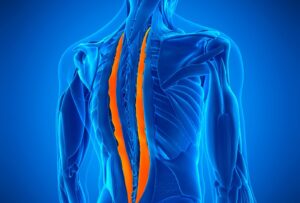Waist and lower back support belts or back braces are used for many conditions related to the lower back, such as low back pain, stiffness, and reduce mobility and to offer extra support to weak muscles.
It is worthy to keep in mind that waist supports and braces are recommended as a part of a comprehensive treatment programme, and one must refrain from wearing a back belt without the advice of one’s doctor.
A waist support belt is an excellent method of preventing back injuries and it is also a way of nonsurgical treatment for certain back problems. A waist support belt may help recover and reduce pain from the following conditions.

Post-Operative Healing
After surgery on the vertebral column, a rigid brace is usually prescribed in order to reduce pressure from the vertebral column. It also acts to add stability and limit the range of movements and tiny motions to provide the patient a healthy, safe and healing environment. The waist support belts are usually recommended to be work between three and eight weeks following the surgical intervention but the duration varies from patient to patient according to the condition of the patient.
Spondylolysis
In this case, a rigid or semi-rigid waist support belt is recommended to reduce the unhealthy and painful micro-motions at the level of a fractured vertebral bone. Thus, it reduces the pain and potentially increases the ability of vertebrae to heal.
Osteoarthritis
Spinal osteoarthritis is a degenerative condition in which the vertebral column becomes potentially unstable. If the affected person uses a rigid wait support belt in this condition, painful micro-motions and instability and of the vertebral column are prevented.
A waist support belt also decreases the pressure from the affected facet joints, resultantly reducing pain and making routine movements easier. Movements like changing from a sitting to a standing position or standing from lying become easy to perform by the affected person.
Isthmic Spondylolisthesis
It is a condition in which vertebral slippage takes place. If you use a rigid waist support belt for this condition, it will minimize the amount of slippage of the vertebrae and pain and thus you will feel a marked improvement in your walking ability. A rigid back brace act to reduce the range of movements at the site of fracture of vertebrae and thus minimize the potential damage to muscles, joints, nerves, tendons, and ligaments. You will feel a remarkable improvement in your pain.
Spinal Stenosis
Braces are also suggested in case of spinal stenosis in order to remove stress from the spinal column and reduce micromotions in the lower part of the vertebral column. This in turn also reduces nerve irritation and radicular pain. A waist support belt also tends to maintain the normal body posture and shift the weight of torso to abdomen instead of back. This causes a reduction of pressure and strain from the spinal column which is good for spinal health.
Muscle Tension And Strain
If the muscles of your lower back are strained, a flexible waist support belt is recommended in this case. As we have already discussed, a waist support belt reduces the muscle tension by alleviating the pressure from the vertebral column. This, in turn, decreases the amount of strength required by muscles to support the vertebral column.
In addition to this, the heat from the belt also acts to relax the tense muscles which also contributes to relieving the pain. If you are suffering from a muscle injury or weakness, you should not use the waist support belt beyond two to four days.
Lumbar Pain
If you are suffering from lumbar pain, try lumbar belts with a spine decompression feature to not only provide some extra support to the lumbar region of your vertebral column and to reduce the amount of pressure exerted at this region.
Another option for you is to use a ‘hyperextension waist support belt’ that puts pressure on the sternum, in front of the hips and mid-back, acting to limit the forward flexion of back. It also provides you a good spinal alignment and maintains proper posture which alleviates pressure from the vertebral column and makes you comfortable.

Backrack Lumbar Decompression Belt
Factors for Bracing Success
Here we’ll describe some factors that contribute to the success of the waist support belt.
Wearing The Belt As Advised
Good compliance to wear a waist support belt continuously as per the advice of the doctor is one of the major factors for the success of this belt although there may be many causes why these belts may be a bit difficult to wear for the patient, for example interference in the daily routine tasks and discomfort. It is recommended to consult with your doctor before you give up on this belt completely.
Viewing The Waist Support Belt As A Positive Aid
One survey found that waist support belts show more effective results when it is considered as potentially beneficial by the patient as well as a positive behaviour to go along with good compliance is maintained regarding its impact.
Not Depending On The Waist Support Belt For Long Term Pain Relief
Waist support belts are generally recommended for a short duration of time. Wearing this belt for more time than recommended is thought to cause muscle atrophy and enhances the dependence on this belt which further causes the weakening of back and enhances the chances of soft tissue injury and aggravation of pain.
You must keep the following things in your mind while you are wearing a waist support belt:
- Put on your waist support belt correctly. It must be worn correctly according to its structure and according to your doctor recommendation.
- You should wear your waist support belt with breathable clothes. This belt is usually put on over a loose shirt to avoid dampness or discomfort. You must select a breathable fabric like cotton so that you may feel relaxed.
- Position your waist support belt correctly. If you are recommended a lumbar support back belt, put it on around your lower back for lower back pain relief. If you are prescribed with a cervical belt, wear it around your neck.
- Keep yourself active. It will enhance the speed of your recovery and healing phase.
- Do not lend or borrow a waist support belt. Wear your own belt which fits to your body.
Author: Spinal Backrack








